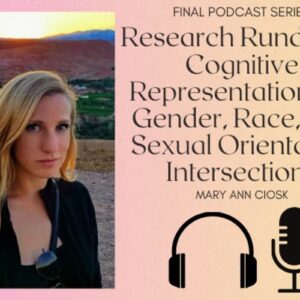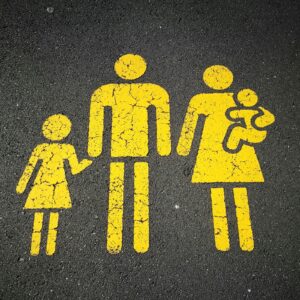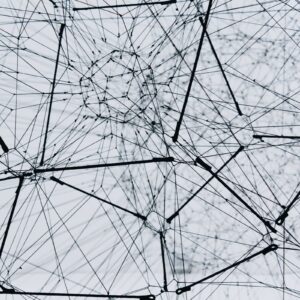
Mary Ann Ciosk
ESR 10
E-Mail: maryann.ciosk@phd.units.it
Project abstract
In a hiring procedure, candidates are often requested to mention their demographics, and in certain cases, the order of information is presented in a fixed format, e.g., LinkedIn, standardized application forms. These demographics, which are also referred to as social category labels, are used as a basis for impression formation of the candidate by the selection committee members. We will analyze how perceivers form an impression of an individual given a social category label and whether and how this impression is updated when an additional social category label is provided. We will further analyze whether/how the order of presentation of these intersectional social category labels affects the impression formation process. To achieve this aim, we will rely on binary gender labels (i.e., man and woman) and binary race labels (i.e., Black and White). Previous social cognition literature has defined particular category memberships as “normal” or “default values”, based on general population perception (Zarate & Smith, 19901 ). For instance, in American culture, being Black and being female are both viewed as less normative than being White and being male (Stroessner, 19962 ). Based on this evidence, we suggest that the second social category presented may be either redundant or unexpected, resulting in either no change in impression in the case of redundancy, a boosting of the default implied by the first category membership, or an update of the overall impression in the case of an unexpected (second) social category. Predictions concerning the category redundancy, boosting, and updating will be derived from different models accounting for intersectional stereotyping (e.g., non-normative model, stereotypeoverlapping model, intersectional non-prototypicality model). Additionally, we suggest that order effect (i.e., primacy) will be particularly evident when redundancy occurs between category labels, and this effect will be attenuated when updating occurs. The study will be pre-registered on OSF, ethical approval will be obtained prior to conducting the experiment, and data will be collected online.
1 Zarate, M. A. & Smith, E. R. (1990). Person categorization and stereotyping. Social Cognition, 8, 161-185.
2 Stroessner, S. J. (1996). Social categorization by race or sex: Effects of perceived non-normalcy on response times. Social Cognition, 14(3), 247–276. https://doi.org/10.1521/soco.1996.14.3.247
Supervisor: Prof. Dr. Andrea Carnaghi, University of Trieste/Italy
Posts
 Social cognition and the mental representation of intersectional social categories 16. June, 2024 In this podcast episode, G-Versity early stage researcher, Mary Ann… …
Social cognition and the mental representation of intersectional social categories 16. June, 2024 In this podcast episode, G-Versity early stage researcher, Mary Ann… …Social cognition and the mental representation of intersectional social categories Read More »
 How should an organization go about achieving gender diversity? A few suggestions from my PhD research 11. February, 2024 Nowadays, there is increased awareness of diversity issues and organizations… …
How should an organization go about achieving gender diversity? A few suggestions from my PhD research 11. February, 2024 Nowadays, there is increased awareness of diversity issues and organizations… … Life as a social cognition researcher: Interview with Rosandra Coladonato 31. July, 2023 Rosandra has recently completed her PhD in social cognitive psychology… …
Life as a social cognition researcher: Interview with Rosandra Coladonato 31. July, 2023 Rosandra has recently completed her PhD in social cognitive psychology… …Life as a social cognition researcher: Interview with Rosandra Coladonato Read More »
 Stereotyping overpowers logic: If Linda is a feminist, Jonathan must be gay 24. April, 2023 Twisting the well-known conjunction fallacy to reveal our reliance on… …
Stereotyping overpowers logic: If Linda is a feminist, Jonathan must be gay 24. April, 2023 Twisting the well-known conjunction fallacy to reveal our reliance on… …Stereotyping overpowers logic: If Linda is a feminist, Jonathan must be gay Read More »
 Prototypes: The Gender and Racial Biases That Are Too Obvious To Notice 27. May, 2022 In less than one second, we effortlessly and automatically categorize… …
Prototypes: The Gender and Racial Biases That Are Too Obvious To Notice 27. May, 2022 In less than one second, we effortlessly and automatically categorize… …Prototypes: The Gender and Racial Biases That Are Too Obvious To Notice Read More »
 Useful Tips for PhD students 29. April, 2022 During the annual G-Versity workshop in Venice this April, Mary Ann Ciosk and Clara Plückelmann… …
Useful Tips for PhD students 29. April, 2022 During the annual G-Versity workshop in Venice this April, Mary Ann Ciosk and Clara Plückelmann… … Androcentrism: Learning to see the invisible 14. April, 2022 As a child, I had already internalized that the “neutral”… …
Androcentrism: Learning to see the invisible 14. April, 2022 As a child, I had already internalized that the “neutral”… …